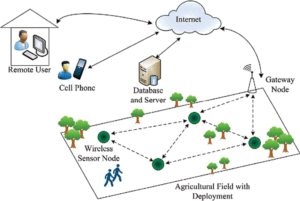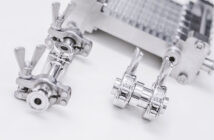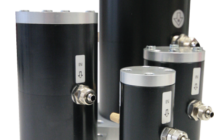 It is no violation of reason to say that agriculture is as old as man himself, American engineering expert Taylor Welch says. But how will wireless sensing play an increasing part?
It is no violation of reason to say that agriculture is as old as man himself, American engineering expert Taylor Welch says. But how will wireless sensing play an increasing part?
The biological make-up of us makes nutrition pivotal to our survival. Since food occupies such an esteemed position in our lifelong scale of preference, ways of engaging more efficiently in agricultural activities have been sought.
The progression from subsistence agriculture (providing food enough for just one’s family) to commercial agriculture (providing food for a larger population for profits in return) has made this search even more intense. How can I farm larger and more successfully while incurring minimal costs?
As usual, technology tirelessly shows up, ingeniously suggesting a solution. Wireless sensors, as a helpful friend to agriculturists, is increasing in popularity. The speed, accuracy and higher yield it promises to infuse in growing crops are difficult to pass by without exploration; a reality reminiscent of mind-blowing smart modes of communication today. Thus, wireless sensors of various types and choice of any hinges on user’s requirement is an option that can lead you to more agricultural prosperity.
Smart or precision agriculture, significantly involving sensors, has come to stay, considering its environmental-friendly tendency. A wireless sensor finds out whether a physical property of a soil or crop exists, and determines the extent of such component. This implies that temperature, humidity, air, moisture, soil fertility level and what have you can be reliably known without the hassle of taking around chords and wires.
In other words, sensors function like our five senses which enable us productively to keep in touch with our immediate environment and respond to stimuli where appropriate. Similarly, data proceeding from these sensors paves the way for farmers to take timely relevant actions. The three main functions of a sensor within a system are monitoring and control, security and warning, and diagnosis and analysis.
The different factors which affect high field yield such as water, soil nutrients, air and atmospheric temperature have given rise to sensor technologies which illuminate them. Thus wireless sensors, in accordance with operational disposition, are basically grouped into three: physical sensors, mechanical sensors and chemical sensors.
Acoustic sensors, flow sensors, humidity sensors, pressure sensors and temperature sensors are classified as physical sensors. Proximity sensors, position sensors, level sensors and motion sensors are grouped under the mechanical sensors. Chemical sensors profile biosensors and gas sensors.
An acoustic sensor is an insect pest detection sensor which works by monitoring the noise level of the insect pests. Wireless sensor nodes connected to a base station are placed in the field. When the noise level of the pest crosses the threshold, a sensor transmits that information to the control room computer, which then accurately indicates the ravaged area.
Proximity sensors ensure spaces between crops are correctly noted when activities to facilitate growth are on-going.
Profile biosensors to a great degree provide insight on the suitability of farm produce after harvest by checking for harmful insalubrious contents. For instance, optical biosensors are said to show greater potential for the detection of pathogens, pesticide and drug residues, hygiene monitoring, heavy metals and other toxic substances in the food to assess consumption safety.
Soon, the use of water and fertiliser will be measured and monitored in detail, sometimes on a plant-by-plant basis. The benefits will be higher productivity and more efficient use of land, water and fertiliser. But it will also help satisfy the rising demand for transparency in farming.
Consumers increasingly want to know where their food came from, how much water and chemicals were used, and when and how it was harvested. We are in for an agricultural boom where sensors, wireless ones inclusive, will arm farmers with more detailed details about conditions surrounding their crops, step-up certainty in having rich harvests and protect better the interests of consumers.
However, looking the way of wireless sensors and keying in to smart or precision agriculture has become very salient, given the prediction by the Food and Agricultural Organisation (FAO) of the United Nations that food production must increase by 70% in 2050 for sustenance of the world›s population.
If this upward turn doesn’t happen, food scarcity will very likely sweep across the globe, hiking food prices, burgeoning mortality rates and poverty, thereby threatening the sustainable development goals. Bearing in mind prevention is better than cure, wireless sensors usher us into smart and improved farming with benefits for agri businesses and humanity. The ball is now in our court.
Taylor Welsh has worked as a content writer and engineering specialist for the past 15 years at Ax Control, an automation control device service and supply company based out of North Carolina. www.AxControl.com. This opinion piece was drawn from Senses Online.


























































































 It is no violation of reason to say that agriculture is as old as man himself, American engineering expert Taylor Welch says. But how will wireless sensing play an increasing part?
It is no violation of reason to say that agriculture is as old as man himself, American engineering expert Taylor Welch says. But how will wireless sensing play an increasing part?

